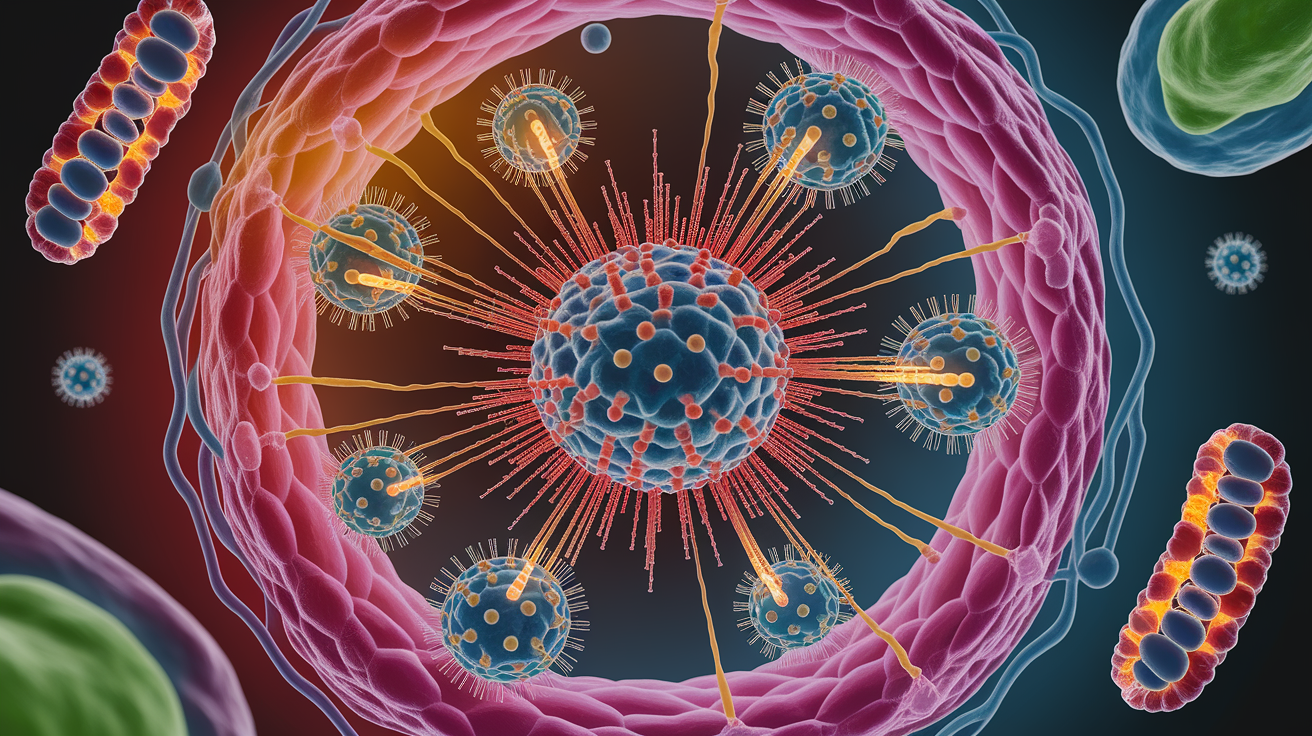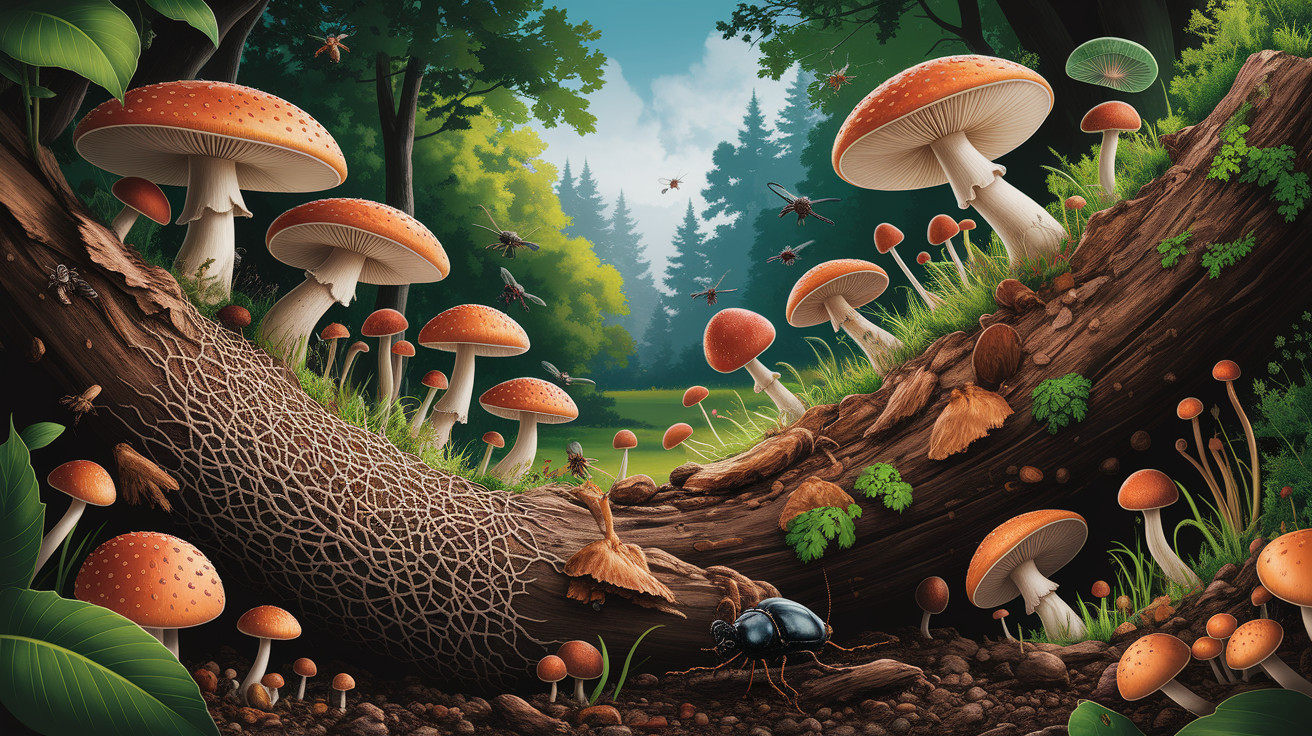Quick Answer: Fungi are nature’s master chefs, breaking down tough organic matter into bite-sized nutrients that can be reused by plants, animals, and microbes. Using a mix of powerful enzymes and clever chemistry, they transform wood, leaves, and other debris into vital ingredients for the ecosystem’s buffet table.
Breaking It Down
If you’ve ever seen a fallen log slowly turning soft and crumbly, you’ve witnessed fungi at work. These organisms play a key role in nutrient cycling, returning carbon, nitrogen, and minerals locked in organic matter back into the soil and atmosphere.

Here’s how the fungal decomposition process works in simple terms:
- Penetrating the food source: Tiny thread-like filaments called hyphae spread through the material, like explorers mapping out a new land.
- Breaking down the walls: Fungi release specialized chemicals and enzymes outside their cells to start digesting the material.
- Absorbing nutrients: The digested molecules are drawn back into the fungal body, or mycelium, as food.
Unlike bacteria, which often work best on simpler organic matter, fungi excel at handling complex plant polymers like cellulose and lignin found in wood.
Enzymatic Powerhouse
The superstar tools in a fungus’s kitchen are its extracellular enzymes. These tiny protein machines break down large, tough molecules into smaller, soluble components.

- Hydrolytic enzymes: Specialists in dismantling polysaccharides such as cellulose and hemicellulose, turning them into simple sugars.
- Oxidative enzymes: Experts at attacking lignin, the hard, waterproof compound in wood that makes it so durable.
- Proteases and chitinases: Used to break down proteins and chitin from other organisms’ remains.
This enzymatic breakdown is what allows fungi to feed on substances most other decomposers can’t touch, making them crucial for forest floor decomposition and composting processes.
Fenton Reaction and Chemical Arsenal
Fungi don’t rely on enzymes alone—they also use reactive chemistry to get the job done. A prime example is the Fenton reaction, a process where iron and hydrogen peroxide react to create hydroxyl radicals, which are extremely reactive and can break apart tough wood structures.

- Brown-rot fungi: Masters of the chelator-mediated Fenton reaction, allowing them to quickly weaken wood cell walls without destroying their own enzymes.
- Two-stage strategies: Some fungi first unleash chemical attacks to open up the structure, then follow with enzyme deployment to complete the breakdown.
This combination makes fungi effective not only at breaking down cellulose and lignin but also at preparing those materials for other soil microorganisms to finish off.
Who’s Doing the Decomposing
Not all fungi have the same role in organic material decay. There are several key players:

- Saprotrophic fungi: The primary decomposers, breaking down dead plant and animal matter and recycling nutrients into the carbon cycle.
- Ectomycorrhizal fungi: Form symbiotic relationships with trees, trading sugars for nutrients. They don’t fully break down woody material but can decompose certain components like chitin and proteins in soil organic matter.
- Specialist decomposers: Some focus on leaf litter, others on dung, and some on shells of insects—each has its own menu.
In forests, Basidiomycetes (a large fungal group) are particularly skilled at breaking down the lignin-cellulose-hemicellulose complex of woody plants.
Environmental Tuning
The efficiency of fungal decomposition depends heavily on the environment. Factors such as temperature, moisture, and oxygen levels can make or break their performance.

- Temperature: Moderate warmth often speeds fungal metabolism, but extremes can slow or stop activity.
- Moisture: Some moisture is needed for enzymes to work, but waterlogging can lead to oxygen-poor conditions that inhibit many fungi.
- Oxygen levels: Most fungal decomposition is aerobic, meaning it requires oxygen for maximum efficiency.
- Nutrition in the substrate: Nitrogen content in the material influences how fast fungi can make new proteins and grow.
Even within a single fungal network, different hyphal tips may experience different micro-conditions, leading to variations in decomposition activity on a microscopic scale.
The Final Spore
Fungi don’t just help themselves when they break down matter—they feed entire ecosystems. By unlocking nutrients from dead materials, they make these resources available to plants, animals, and microbes, keeping the natural cycles humming along.
From the forest floor to your backyard compost pile, these hidden chefs quietly transform the leftovers of life into the building blocks for new growth. Next time you see a mushroom sprouting from a fallen branch, remember: beneath your feet, a vast and tireless kitchen is at work, ensuring nothing in nature truly goes to waste.












